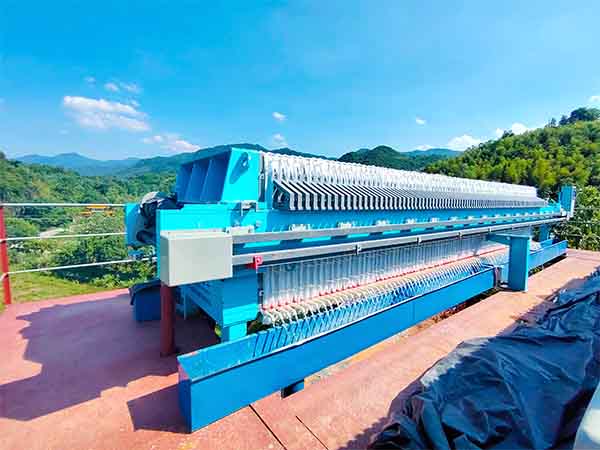A plate and frame filter press generally consists of five major components: filter plates, hydraulic system, filter press frame, filter plate transmission system, and electrical system. When selecting equipment, the following aspects should be considered.

1. Requirements for the solid content of the mud cake. Generally, compared with other types of dewatering machines, the plate and frame filter press has the highest solid content of mud cake, which can reach 35%. If the factors of reducing the floor space occupied by sludge are taken into consideration, the plate and frame filter press should be the preferred option.
2. Material of the frame.
3. Material of the filter plate and filter cloth. They must be corrosion-resistant, and the filter cloth must have a certain tensile strength.
4. Movement of the filter plate. It must be fully automatic or semi-automatic through hydraulic and pneumatic devices to reduce the labor intensity of the operator.
5. A filter cloth oscillation device to make the filter cake easy to fall off.
Compared with other types of dewatering machines, the biggest disadvantage of the plate and frame filter press is that it occupies a large area. At the same time, because the plate and frame filter press operates intermittently, the efficiency is low, the operating environment is poor, and there is secondary pollution, it is rarely used in large domestic sewage treatment plants. In recent years, a lot of development and research work has made it adapt to the requirements of modern sewage treatment plants. For example, through PLC system control, the system can be fully self-operated. Its filtration, filter plate movement, filter cloth oscillation, compressed air supply, filter cloth washing, feeding and other operations can all be completed through PLC remote control, which greatly reduces the labor intensity of workers.
Related Products
There are no relevant articles.
Send us a message
We will provide you with the most professional services.

